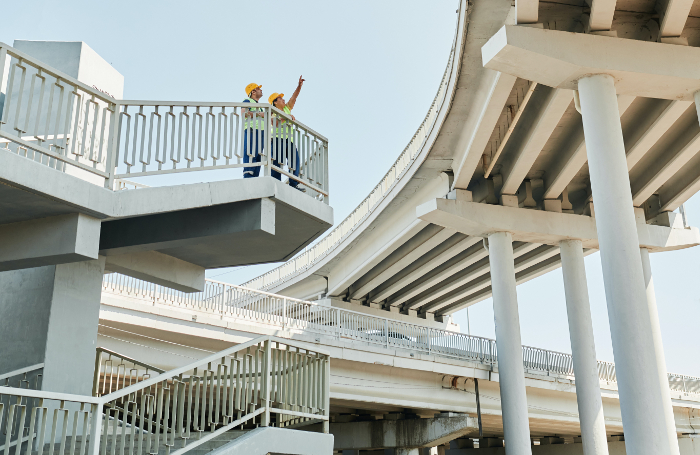A well-prepared Design and Access Statements (DAS) is a valuable tool in persuading a planning officer of the quality of your project.
It should tell the story of how a design proposal relates to its site; and how the design has evolved and responded to its local context. But it can also pre-empt any questions a planning officer is likely to have; and address the specific policies, at the national and local levels the application will be evaluated against.
Colin Haylock, architect-planner and author of the RIBA Good Practice Guide: Making Successful Planning Applications suggests it is an opportunity to proactively take charge of the planning discussion.
“You can use the statement to demonstrate your understanding of the planning policy framework which the planners will be bringing to bear,” Haylock urges.
Kingsley Hughes, Director of Kent-based Designscape Consultancy, is also firmly of the opinion that the DAS is an essential asset in the planning process.
“We follow the principle that the DAS should take the planning officer by the hand and lead them through the design process, with arguments set out in easily digestible form,” Hughes reveals.
“Hopefully the statement will help them to write their own delegated report and sell the project to planning committee members. On larger schemes, the statement will include all of the detailed work we would do if fighting an appeal.”
When it was first introduced, the DAS was seen as a way of ensuring that projects took accessibility more seriously and it was required for most applications. This changed in 2013, when the need for a DAS was limited to:
- buildings of more than 1,000m2
- housing developments of ten dwellings or more
- any development requiring listed building consent
In conservation areas, the requirement applies to single dwellings and buildings of more than 100 m2. Hughes’ seven-strong practice will usually produce a DAS whether or not it is required: for a large house extension, for instance.

Haylock encourages architects to consider the notion of ‘access’ not only in terms of literal physical accessibility but in the broader sense of inclusivity.
The DAS can be used to highlight opportunities for mobility, wellbeing, and access to amenities and transport for example – for a range of different users. Accessibility is not just about access to the project, but what broader kinds of accessibility the project provides to residents.
Many local planning authorities have specific pages on their websites regarding what content they require in a DAS, and some offer their own templates for preparing them. This should always be researched.
Haylock makes a point that is perhaps so obvious many architects might overlook it: that you can always look up a DAS that someone else has submitted for a similar project in the relevant local authority.
In practice, most planning departments appear to adhere to the format and guidance provided by CABE’s Design and access statements: How to read, write and use them, which can be freely downloaded. Designscape’s statements follow the CABE format, and Hughes says he is yet to come across a local planning authority that requires something essentially different.
He regards his practice’s information-rich design statements as a client service that sets them apart from other consultants.
“Our statements are very visual,” Hughes states. “We put a great deal of effort into presentation, into maximising their impact.”
Response to site and context are the starting points. Designscape will always insist that the client commissions a point cloud 3D laser survey of the site and immediate environs: this is non-negotiable for them.
They will also insist that the surveyor carrying out the survey saves it into Revit BIM. This gives the practice a full 3D model from which it can take as many 3D stills, sections, and elevations as it wants to illustrate the DAS.
If it is a sensitive site, such as a conservation area, the survey scope will be raised to include details such as fenestration, jambs, and mouldings. The graphics may not be CGI quality, but they can make an impressive and easily digestible presentation for planners.
Hughes is adamant that architects should always be able to justify their projects. The DAS is therefore not just a way of selling a scheme to planners, but a means for architects to express how they think about and value their own work.
“As an architect, you are shooting yourself in the foot if you do not make the most of the opportunity created by producing a high-quality design statement."
Haylock agrees: a DAS should ideally be used as a design process tool, begun at the outset of a project and developed as the design progresses. His key piece of advice is that the DAS should not be left to the end: start thinking about what will go into it at the very beginning, and keep notes.
Making Successful Planning Applications by Colin Haylock is available now from RIBA Books.
Achieving good design through planning is an on-demand RIBA CPD module available now. It explains current planning policy in relation to good design and the direction of travel for planning reform.
Thanks to Colin Haylock, Principal, Haylock Planning and Design; Kingsley Hughes, Director, Designscape Consultancy Limited.
Text by Neal Morris. This is a Professional Feature edited by the RIBA Practice team. Send us your feedback and ideas.
RIBA Core Curriculum topic: Places, planning and communities.
As part of the flexible RIBA CPD programme, professional features count as microlearning. See further information on the updated RIBA CPD core curriculum and on fulfilling your CPD requirements as a RIBA Chartered Member.









